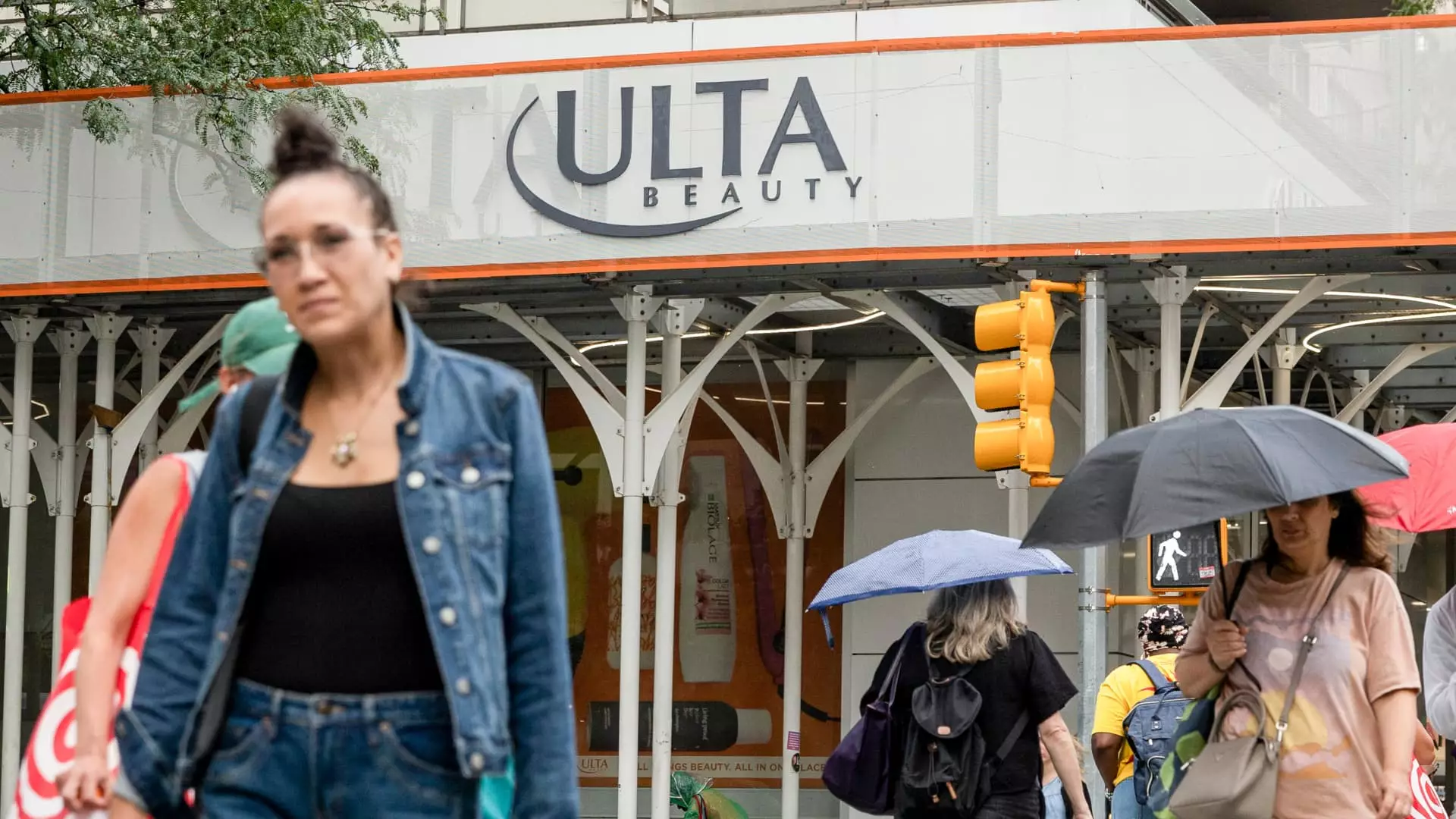Ulta Beauty recently faced a setback as its shares plummeted by 7% in extended trading due to falling short of second-quarter expectations. The company reported a decline in comparable sales during this period, marking its first earnings per share miss since May 2020 and first revenue miss since December 2020. CEO Dave Kimbell acknowledged the disappointing performance, attributing the decline to several key factors. These included an “unanticipated operational disruption” resulting from a change in store systems, underwhelming impact from promotions, cautious consumer spending habits, and heightened competition in the beauty industry.
Kimbell highlighted that Ulta’s market share is being challenged, particularly in the prestige beauty sector driven by makeup and hair categories. According to Circana data, cited by Kimbell, the company lost share in this segment while maintaining its share in mass beauty. Ulta experienced a short-term negative sales impact from the competition, which Kimbell noted to be unusual in scale and pace with 80% of stores affected. The CEO emphasized that the competitive pressures are likely to persist in the near term, although positive signals from guest engagement, new store impact, success in the salon business, and loyalty growth provide confidence in Ulta’s underlying business strength and health.
Ulta revised its full-year guidance, expecting same-store sales to be flat to 2% down compared to the previous guidance of 2% to 3% growth. The company anticipates full-year revenue in the range of $11 billion to $11.2 billion, down from the initial forecast of $11.5 billion to $11.6 billion. Similarly, the revised earnings per share outlook is $22.60 to $23.50, lower than the previous forecast of $25.20 to $26. The CFO, Paula Oyibo, noted that it would take more time for Ulta’s actions to change the top-line trajectory and that stores impacted by competitive openings would continue to face pressure.
Ulta’s performance in the period ended August 3 fell below Wall Street expectations. The company reported earnings per share of $5.30 versus the expected $5.46 and revenue of $2.55 billion compared to the estimated $2.61 billion. Net income was $252.6 million, or $5.30 per share, down from $300.1 million, or $6.02 per share, in the same quarter the previous year. Although Ulta’s revenue increased to $2.55 billion from $2.53 billion year-over-year, it still fell short of analyst projections.
In response to the challenges faced, Ulta Beauty outlined strategic initiatives to drive sales growth. CEO Dave Kimbell emphasized plans to boost sales through product assortment enhancements, brand social relevance, consumer digital experience improvements, loyalty program enhancements, and promotional strategy evolution. Additionally, the company aimed to expand its partnership with delivery service DoorDash, test new gamification platforms, and utilize new marketing technology for personalized customer experiences. Ulta has identified further opportunities within the turnaround plan, such as relaunching its own beauty collection and introducing personalized product recommendations for online shoppers. The company is also focusing on enhancing the rewards program value through member-exclusive events and tiered offers.
Ulta Beauty’s recent performance underscores the challenges faced by the company in a competitive retail environment. The miss in second-quarter expectations highlights the need for strategic adjustments to drive growth and regain market share. By addressing operational disruptions, improving promotional impact, and enhancing the overall customer experience, Ulta aims to navigate through the current headwinds and position itself for long-term success in the beauty industry.


Leave a Reply